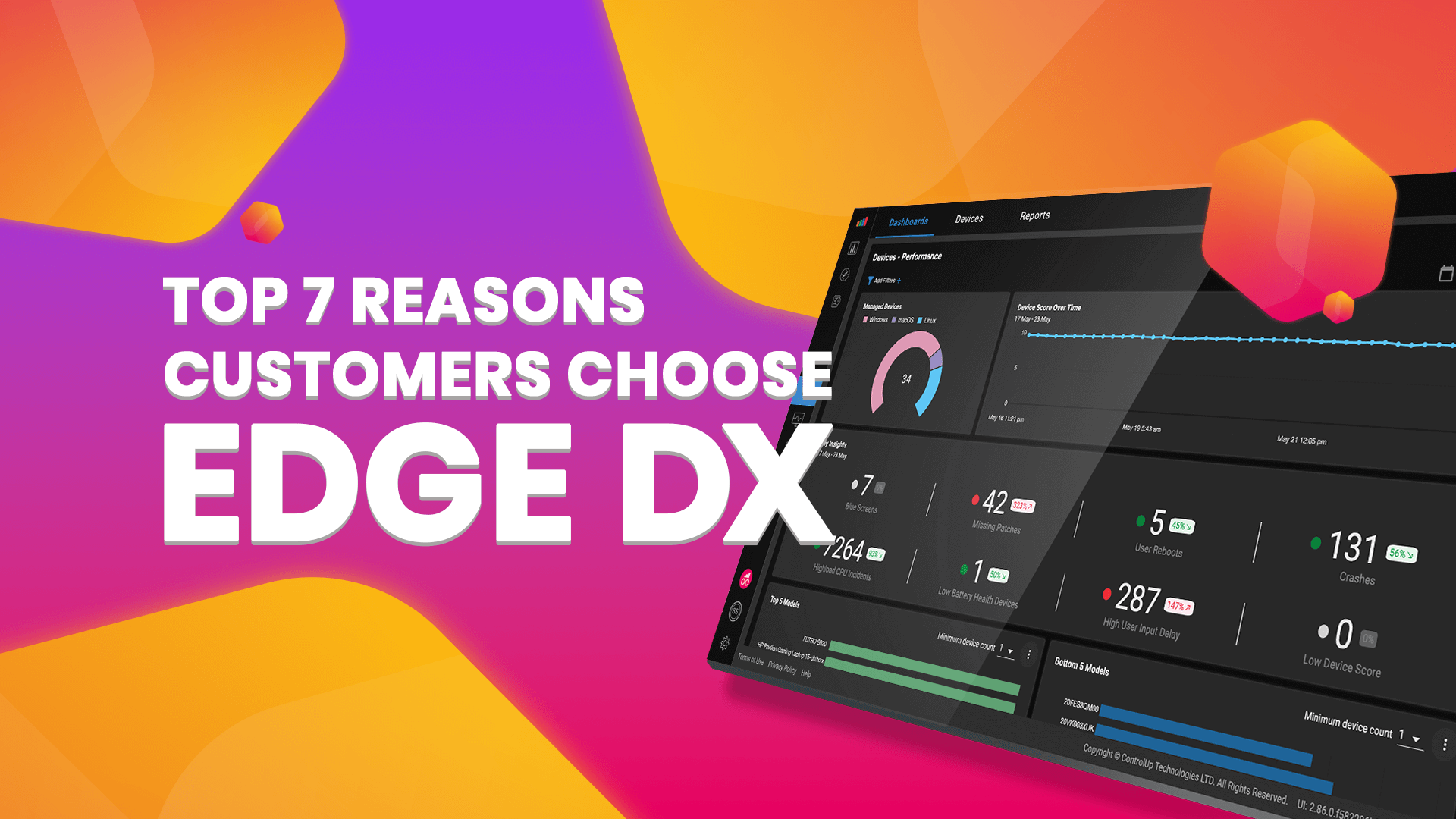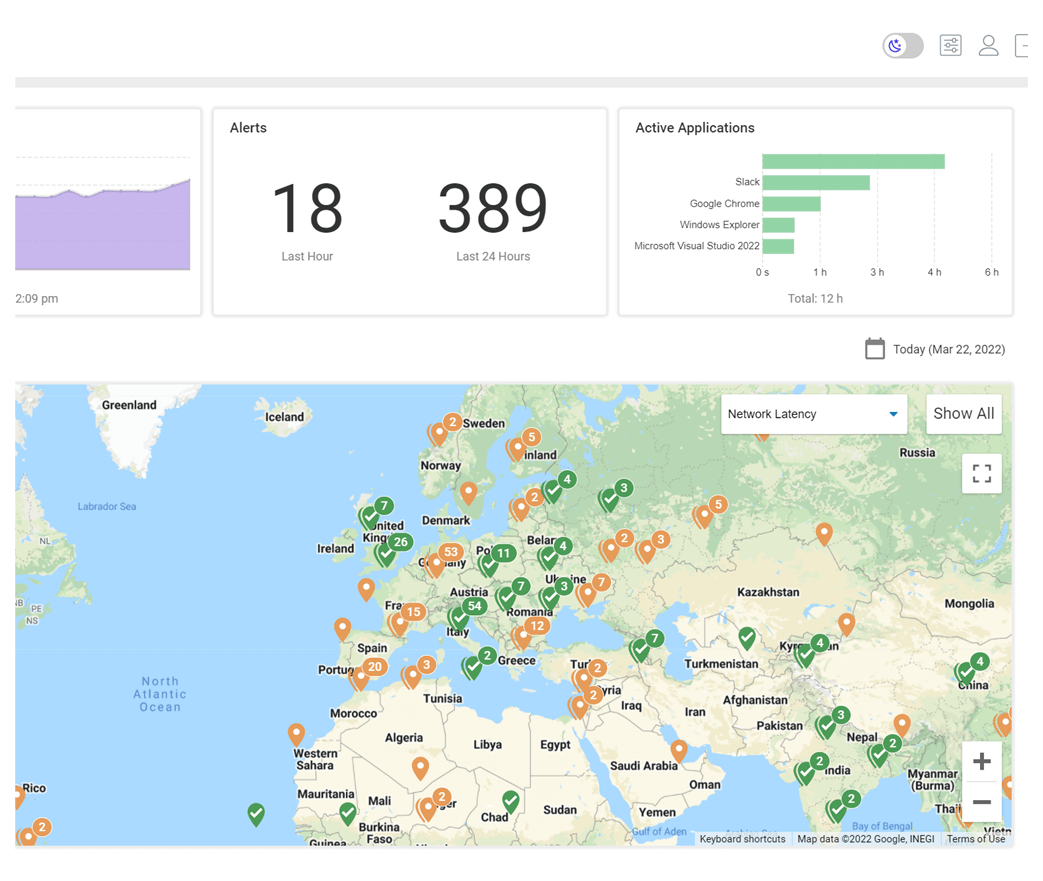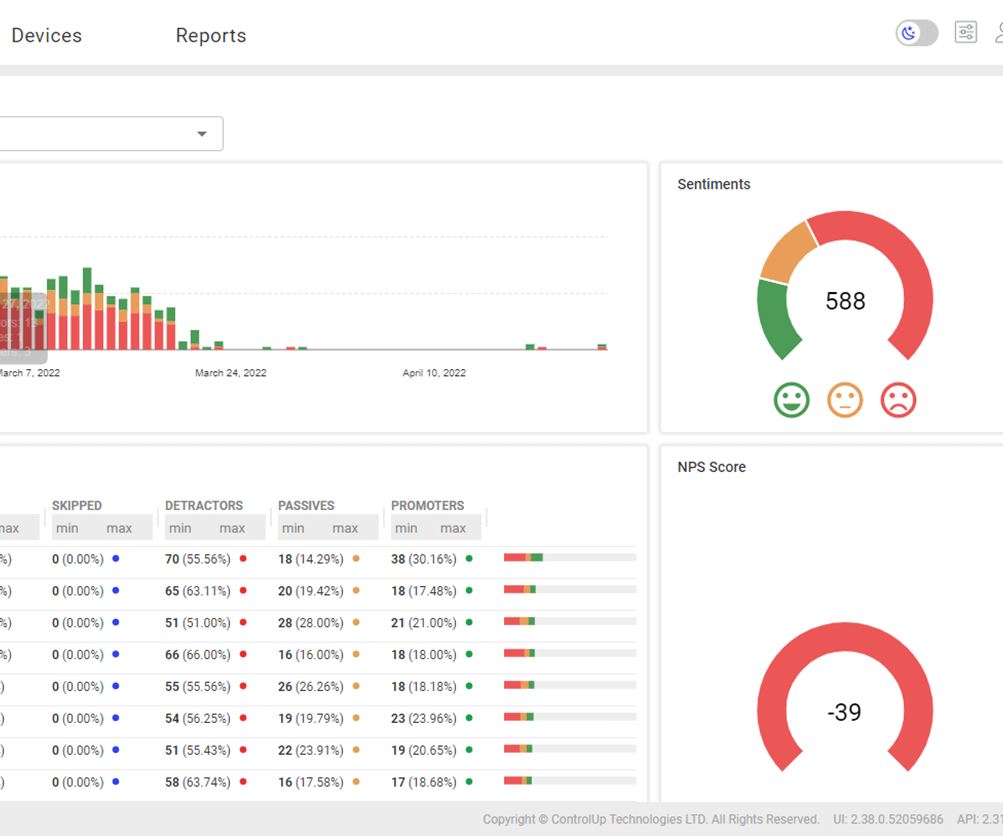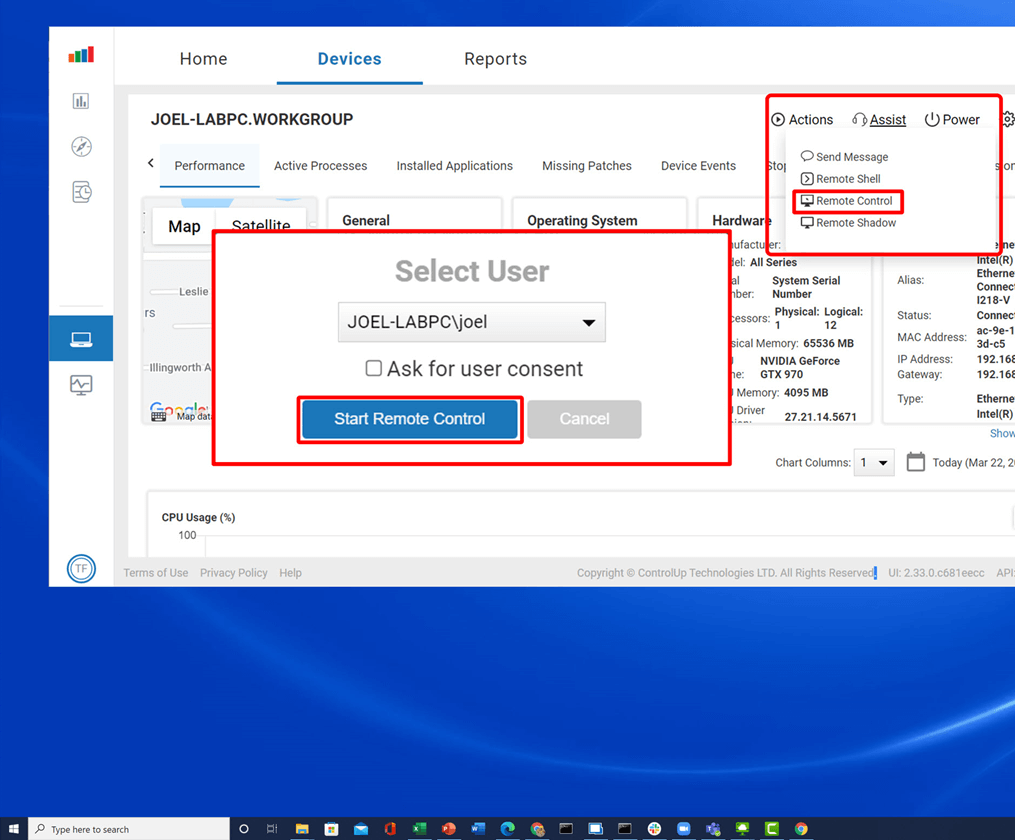
Physical Desktop Support Challenges
Organizations of all sizes need help with supporting physical desktops. A broad set of problems must be addressed, including hardware maintenance, software updates and compatibility, security, accessibility, data loss, support, and troubleshooting. ControlUp for Desktops is purpose-built to reduce IT support costs for physical desktops by identifying, resolving, and preventing problems that device management software can’t.
Introducing Edge DX
Edge DX provides IT teams with a valuable tool for automated IT support and management of physical devices regardless of location within or external to corporate networks. Deploying Edge DX leads to fewer tickets and closes faster for a better desktop experience.
Top Reasons Customers Choose Edge DX
In this blog, I present seven key points our Edge DX customers focus on when providing positive feedback on their internal deployment.
- User Experience Dashboard
- Rapid Remediation
- Troubleshooting Unmanaged Networks
- Reporting
- Multi-Platform Support
- User Sentiment Survey
- Cloud-Managed
User Experience Dashboard

The Edge DX dashboard offers a comprehensive view of the health of all active employee physical desktops with the ability to focus on any specific desktop. The collected data is consolidated, encompassing various metrics such as the number of online devices, generated alerts, and active applications.
In addition, specific desktop data is easily obtainable, providing CPU, Wi-Fi signal, network latency, and other critical information for troubleshooting.
Rapid Remediation
Edge DX reduces the time and frustration that employees experience while sorting out IT issues with four key remediation capabilities:
- Script Actions – Run your own custom scripts or choose from a library of tested scripts from the ControlUp team. Native scripting languages for Windows, macOS, and Linux supported
- Automated Remediation – Configure Edge DX to detect and auto-execute scripts to fix recurring problems
- Remote Assistance – Shadow or remote control a session to quickly identify the problem and provide a fix
- Remote Shell – IT can provide support in a background session without interfering with the employee’s workflow
Troubleshoot Unmanaged Networks

Edge DX excels at collecting data from remote employees’ desktops outside the corporate network allowing for faster problem identification and resolution:
- Wi-Fi Strength – Edge DX measures Wi-Fi signals to prevent performance degradation with 60% or less strength
- Top ISPs – Tracking network providers commonly used by remote employees for corporate engagement
- Network Latency – Edge DX sends pings with traceroutes to definable targets providing IT a better understanding of problematic locations for employees
- Top Applications – Track all application licensing to ensure software is not over-licensed or missing licenses for installed software on a specific device
Reporting

Edge DX collects specific device, system, application, and user activity metrics for detailed reports providing a 360-degree view of the digital employee experience for faster troubleshooting.
- All Devices – Find detailed information on hardware, applications, and locations
- Windows App & Processes – Pinpoint device issues such as stopped processes, CPU time, and users with elevated permissions
- Windows Performance & Security – Detect missing patches and identify profiles by size and event log
- Custom Reports – Create and display specific reports based on IT needs
- New Reports – Highlights new reports available from ControlUp
Multi-Platform Support

Digital Employee Experience Management is more than application delivery and patching; it’s about how the hardware, operating systems, and applications run and how those factors impact user experience. ControlUp for Desktops supports the most popular operating systems with native agents installed and the ability to build specialized scripts for non-standard operating systems.
User Sentiment Survey

Edge DX employee sentiment surveys provide IT with a user’s perspective of the employee’s digital experience. Custom surveys are delivered to the client’s desktop for beneficial results to assist IT in better support. Surveys can be broken down by job role, region, or other sorting criteria.
Cloud-Managed
With more employee digital resources in the cloud, there is less reliance on VPNs reducing the need for device management software behind corporate firewalls.
Edge DX is deployed in a cloud that is closest, physically, to an employee’s location to provide IT with seamless access to their digital experience, no matter where people are working.
Also, Edge DX is a cloud service, so there is nothing to install. Once a tenant has been provisioned and an agent has been installed, time to value can be realized in just minutes, not days or months. Since Edge DX is cloud-managed, you get future-proofed technology, disaster recovery, high system availability, reliability, and control of your solution from anywhere.
Conclusion
ControlUp for Desktops gives IT professionals a real-time understanding and optimization solution that deploys in minutes. Edge DX improves the digital employee experience on endpoint devices by alerting IT about user experience issues and enables IT to sit “side-by-side” with remote employees virtually. IT can then help users resolve their problems and get them back to work quickly. Edge DX has a fully managed cloud infrastructure with unlimited scalability, providing end-to-end security.
For more information on Edge DX:
- Edge DX Home Page
- Edge DX Dashboards & Reporting
- Edge DX Troubleshooting & Remediation
- Edge DX Qualitative Employee Sentiment
- Schedule an Edge DX Personalized Demo
- TestDrive Edge DX with no Download or Setup
